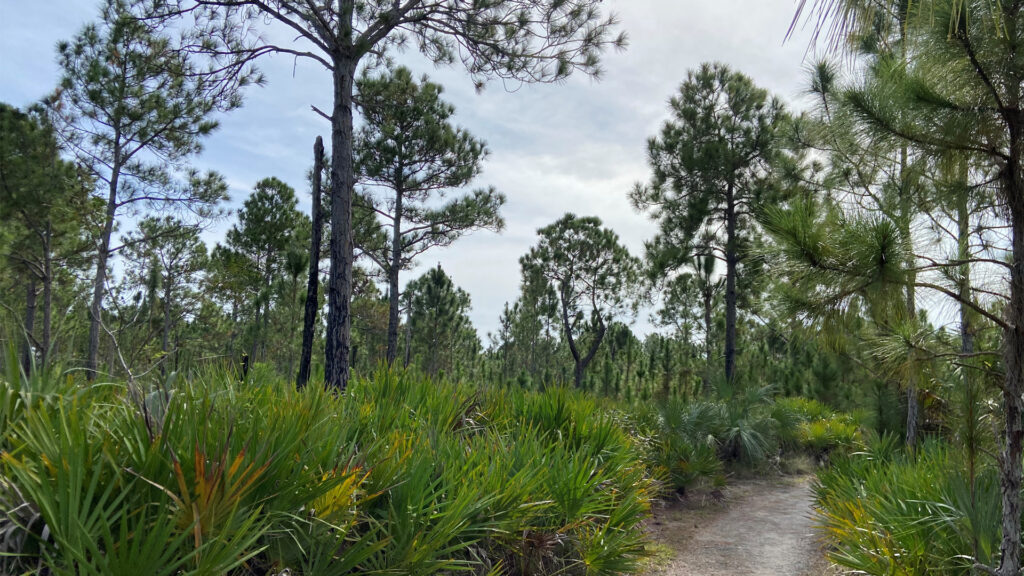By Elise Bennett, Center for Biological Diversity
At times, from the comfort of my living room, I forget that I’m part of the unique and colorful variety of living beings in the world outside. That despite Netflix and popcorn, I’m a single fiber in a thread woven into the fabric of life, along with so many other creatures.
But when I think of extinction, and each vanishing species as another frayed thread in that increasingly tattered and torn tapestry, it’s impossible to ignore the enormous threats facing so many of our fellow living creatures.
Miami’s critically imperiled fragments of pine rockland forests are frequently on my mind these days.

Nestled among roads, businesses and neighborhoods in south Miami, these dwindling forests are bastions of biodiversity. There, beneath the canopy of slash pines, saw palmetto and small flowers and herbs grow amid rocky limestone jutting from the soil.
These forests are like biological lifeboats carrying a precious crew of rare and endangered species into the future as urban development and sea level rise are lapping in on all sides.
Among their ranks is the Rim Rock crowned snake, a delicate little reptile so petite that one snake actually choked on a large centipede it tried to devour.
Then there’s the Miami tiger beetle, a tiny, fierce, glittering-green predator no bigger than a grain of rice that stalks ants in the sandy soils. There are only two known populations — both in urban Miami-Dade.
Florida bonneted bats also call the forests home. They’re easily recognized by the adorably large ears that hang over their faces like the brim of a newsboy cap. The largest known population flies high over the dark parking lot of Zoo Miami, which is surrounded by pine rocklands.
And growing from the rocky soils are precious plants such as Small’s milkpea, which grows hairy pods and delicate, pink flowers, and Everglades bully, which is paradoxically fuzzy and thorny.
But these forests were once much larger, covering more than 185,000 acres of Miami-Dade. Now only 2% remain within the metropolitan area. As the pine rocklands have disappeared, so too have bonneted bats, leafwing butterflies, gopher tortoises and more.
Sadly, this story isn’t unique. The vulnerable plants and animals that call pine rocklands home are among the 1 million species we could lose worldwide over the coming decades.
And extinction and climate change go hand-in-hand. For rocklands in the Florida Keys and Everglades, the threat of rising seas looms large, making the higher elevation forests in Miami even more precious.
But we have a clear opportunity to resist extinction and climate change in south Florida by defending Miami’s pine rocklands.

Protecting, restoring and reforesting Miami’s pinelands means helping dozens of endangered species to the point where they no longer need our help.
It’s also critical to safeguarding communities from climate change. It means having natural oases for people to find refuge from the relentless heat, and more opportunities for children to learn about wild ecosystems in their own backyards.
It means mending the fabric of life that embraces all of us.
It will take a team effort. Miami-Dade County must commit to protecting every acre of pine rocklands, restoring existing forests and regrowing forests that were lost. Congress must fully fund recovery efforts for these forests’ many endangered species. And local, state and federal officials must work together with communities to proactively protect land.
We owe it to ourselves to commit to a vision of south Florida where thriving communities of people and their pine rocklands neighbors flourish in the sunlight dancing through the pine branches. Now is the time to protect these tiny forests — bursting with life — for future generations.
Elise Bennett is the Florida and Caribbean director at the Center for Biological Diversity.
If you are interested in submitting an opinion piece to The Invading Sea, email Editor Nathan Crabbe at ncrabbe@fau.edu. Sign up for The Invading Sea newsletter by visiting here.



